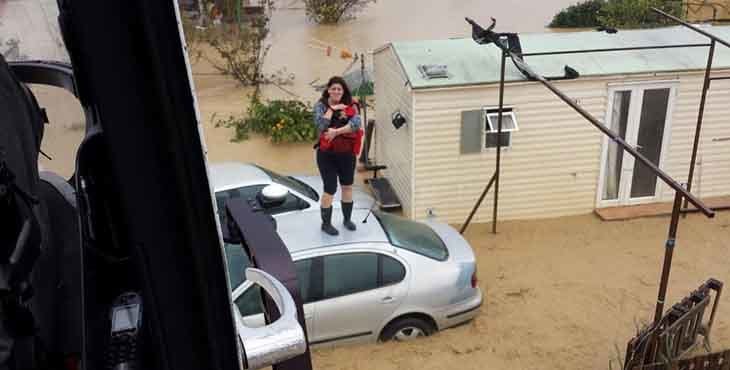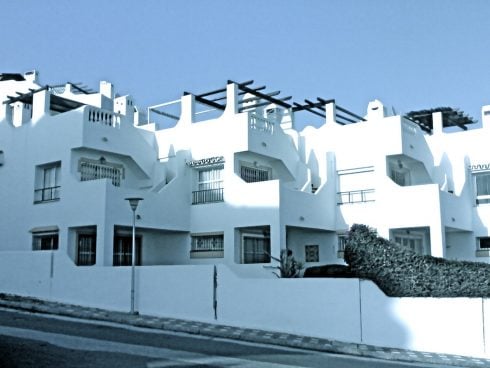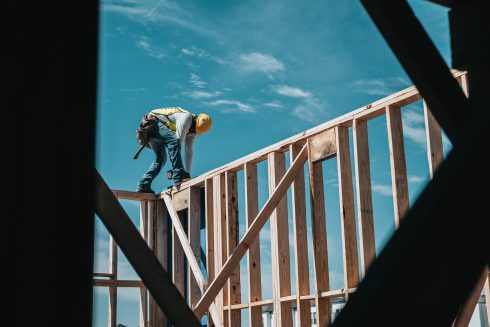
“IT droppeth as the gentle rain from heaven. Upon the place beneath. It is twice blest: It blesseth him that gives and him that takes.’
So wrote Shakespeare in The Merchant of Venice. Well, there has been a little too much blessing in recent days!
Even the crofters in the storm-tossed Western Isles of Scotland would acknowledged that we had more than ‘a wee drop of rain’ on the Costa del Sol over the first two weekends of December.
The first weekend was a welcome soaking for the parched earth and everyone, especially EcoPepe our organic farmer near Álora, was happy to see it.
But on the following weekend, the heavens opened and stayed open for about 36 hours, hitting the western Costa del Sol between Mijas and Manilva particularly hard. With the land saturated from before and the underlying layer still rock hard from drought, the water had nowhere to go except downhill. The fact that houses and roads and pipes and wires and anything man-made was in the way merely meant that it went around, under or through, gathering soil, debris, trees, cars, furniture and anything else in its path. Walls tumbled down, houses were undermined, sewers blocked, internal spaces flooded and possessions destroyed; the list is endless, the costs still being counted.
So, how to avoid the flood affecting you?
If your house is on flat land or a hollow, then you are dependent upon the drains of the community. All you can do is make sure that they are kept as clear as possible, by reminding the administrator or ayuntamiento that this should be the case year-round. However, with a deluge like we’ve had – supposedly the worst for 25 years – no drainage system can be realistically designed to cope with that amount of water at once. Which means you have to expect problems and plan for possession protection as best you can. If your home is in a ‘dry’ riverbed then firstly, it’s unlikely to be legal and secondly, there is no such place unless the river has been diverted elsewhere.
Fortunately, with the mountains so close, most houses are on slopes of various gradients. Many years ago, these hillsides will have been forested. The roots of trees and other plants bound the soil together and provided channels for the water to quickly penetrate to the caves and natural aquifers below. Once the trees were gone for shipbuilding and charcoal, the goats and other aggressive herbivores made sure that the trees didn’t grow again. So the water now pours down the hillsides largely unhindered by nature.
Your aim must be to direct that water around your property and let any that does come onto it be guided through on routes that cause no harm.
Lay field drains at foundation level, uphill from retaining walls and house foundations, with the outlets into pipes that flow down each side of the property and discharge below. Do ensure that your diverted water does not flood your downhill neighbours or create eroded gullies. Backfill above the drains with loose pebbles and stones so that the rainwater can easily trickle down through it to the drain. Over time, these drains will become less effective so they must be cleaned or even replaced.
Also, you must also have regular ‘weep holes’ through the wall at low or even multiple levels, to allows any build-up of water to pass through the wall and remove its weight. Otherwise the soil behind it will act like a sponge, keeping the wall constantly wet, hastening natural chemical breakdown and eventually leading to cracking and total collapse.
More seriously, undiverted water can gradually undermine the foundations of a house, perhaps leading to expensive underpinning to avoid collapse, and certainly causing rising damp.
‘Rain, rain, go away. Come again another day’… preferably later rather than sooner, and NOT in one gigantic bucketload!










